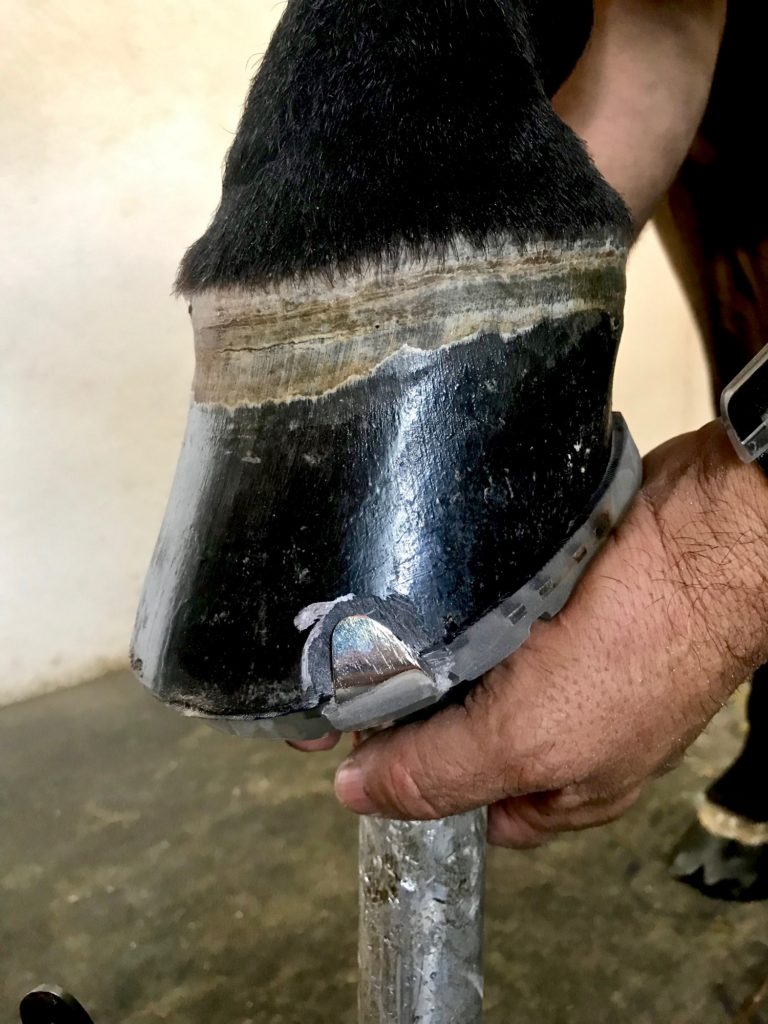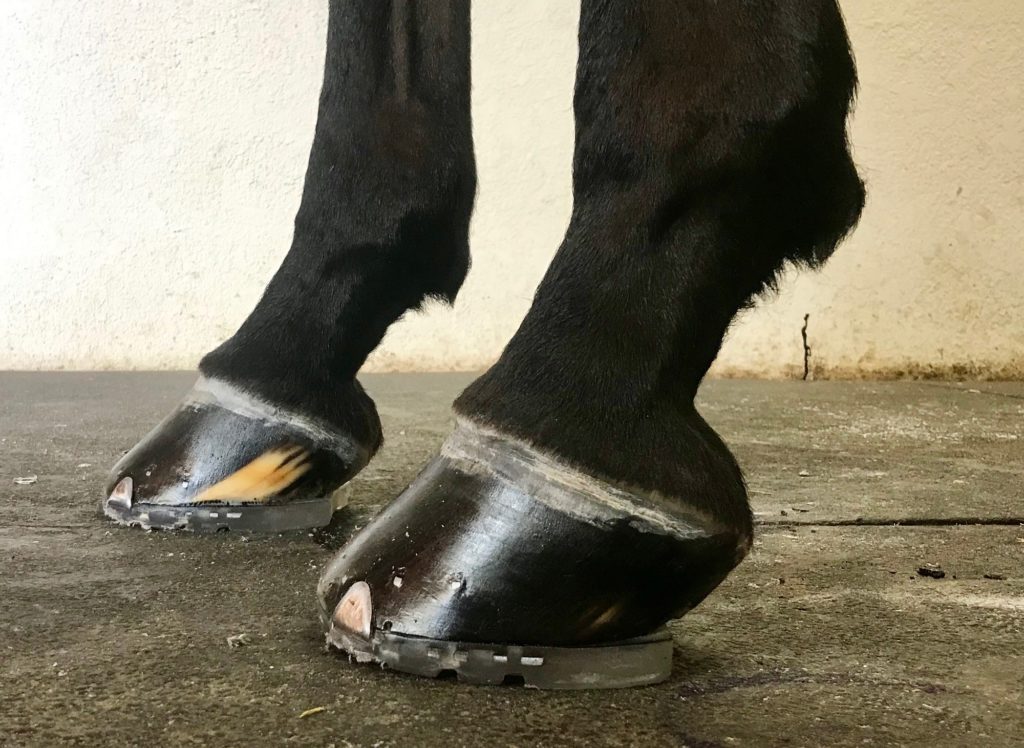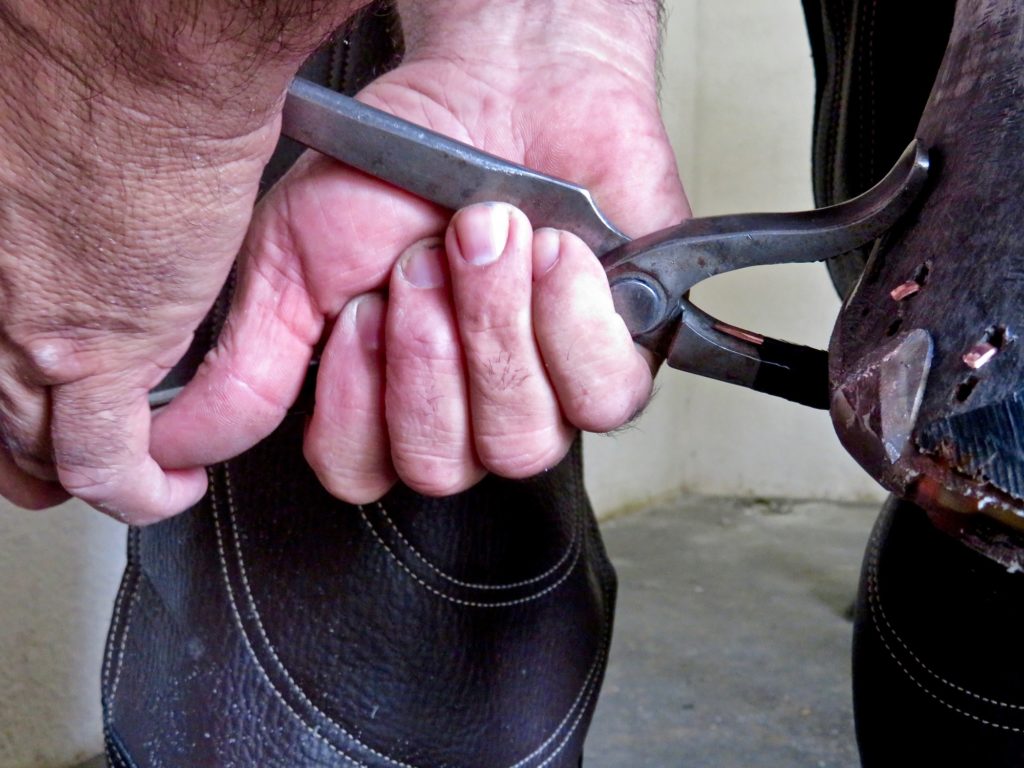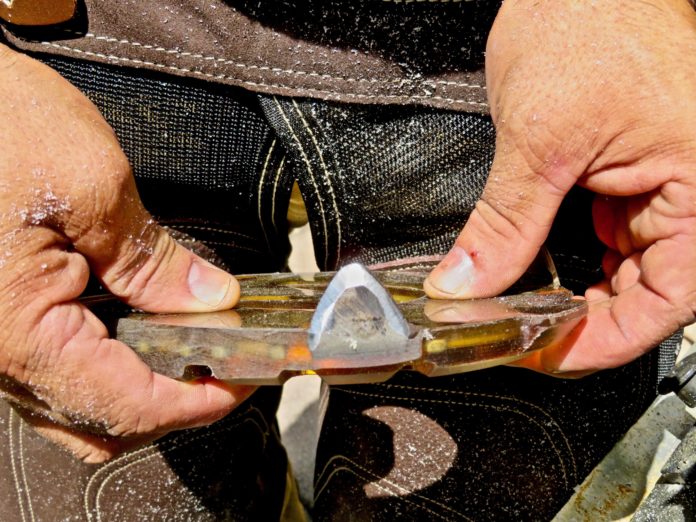Think about this for a moment – horses are shod statically for when they are in dynamic motion. It seems incredible that we shoe a horse standing for when he is moving. It’s a difficult challenge for any farrier and the ability to do it well plays a major role in the horse’s comfort and a farrier’s success in this field.
There are a number of fine points that contribute to that ability, but the one I’d like to focus on is the use of shoe clips. In this case, the EasyShoe Flex clips.
Farriers with clients who are involved in demanding disciplines such as eventing, jumping, or endurance must deal with hoof issues caused by the horse’s shoes undergoing high intensity movement. Lateral work, difficult footing, and rotation are just a few examples of stress factors that influence the ability of a nail to keep the shoe in place. This in turn can result in a trickle-down effect, eventually causing stress on the hoof wall and white line. Over time, those reoccurring stress factors can lead to damaged hoof walls and heightened sensitivity of the hoof capsule. To protect against these outcomes, clips are often introduced to aide in holding the fit of the shoe to alleviate some of the pressure off of the nails. Relief of pressure equals healthier hoof and a more securely fitted shoe. Win-win, right?
Almost.
The key to using clips to their full potential is to fit them correctly.
So what makes for an ideal clip fit? While every farrier and horse are different – there are a few basic landmarks nearly all can agree on.
First, selecting the right clip style is important. In general, I determine my use of side and toe clips fairly simply. I begin with the overall shape of the foot to see what style will fit most naturally. Next, I take a look at mechanics. Side clips are excellent choices for horses when you want to set the shoe back further and leave the toe open for breakover. Toe clips on the other hand are excellent choices for a narrower or club-footed horse whose foot shape requires you to grind the shoe down. Ultimately, clip style is based on the concept of form to function. Does this style of clip match the shape and needs of this horse’s foot? If your answer is yes, more than likely you have picked the correct style.

Second, it is important to realize that you should be aiming for a uniform, flush fit. The hoof wall curves, therefore a poorly fitted clip will result in gaps between it and the hoof wall. For the clip to function correctly as an aid and to avoid the creation of pressure points, it needs to fit the foot uniformly – top to bottom, side to side.
To do this, I begin by trimming the hoof, then determining how I want to shoe to fit by holding the shoe onto the foot and tracing its perimeter with a silver Sharpie. This not only ensures accuracy when I grind the shoe to shape it, but it also provides a template to create a healthy marriage between the clip and the hoof wall.
Bob Pethick of Bedminster, New Jersey, taught me how to accomplish this technique. Bob is a very talented shoer, and he showed me how he uses a small rasp to create a tailored fit for his clips. The rasp allows you to be precise in exactly where and how much hoof wall you take. Be sure to take your time with this technique because you cannot replace the wall you take. I always remind myself to be mindful and methodical about it. Better to check, modify, and re-check as much as necessary than to create a poor fit. When you feel you’ve got it just right, you should be able to run your hand across it and feel the clip blended smoothly into place. There should be no light or space between any contact areas of your clip, and there should be no evidence of excessive pinching or bends.

For a clean finish, I prefer to use my grinder first, then follow with my Buffy to polish the clips.
With the EasyShoe Flex, it is essential that you create a fit that you are completely satisfied with before you nail it down because the urethane material is nearly impossible to modify without a grinder.

Here’s a list of common mistakes for you to avoid. I see these regularly (and have made them myself!):
1. Trying to tap the clip into place after it has been nailed on. The clips are made of spring steel, meaning this metal has memory and it will only bounce back at you.
2. Not having a backspacer on your clincher. Instead of buying another set of clinchers, I adapt my own. Using a nail and some electrical tape, I modify the clinches to have what I refer to as a backspacer (see photo below). This prevents me from pushing the nails down, as opposed to accurately clinching. Without the backspacer, a pushed nail could eventually cause the shoe to loosen.


3. Applying the shoe without having modified it for an ideal true fit. EasyShoe Flex clips are not meant to be fitted to the foot after nailing. If you intend to modify the shoe after you have already applied it, there is a good chance that you will be frustrated and your horse will be uncomfortable.
4. Using the incorrect nails. There is a notable difference between driving a nail through a metal shoe and one with urethane material such as the EasyShoe Flex. Marking your nail holes and predrilling them can be helpful, but selecting the right nails for the job is arguably more important. My two nails of choice for the EasyShoe Flex are the Liberty Slim Blade 5 Combo nail and the Capewell Endura Slim Blade. When I am working on a particularly thin-walled horse, I prefer to use the Capewell Endura Slim Blade. It maintains its integrity but has a slimmer blade in comparison to the Liberty copper nails. I’ve had great success with it, and I would highly recommend it.
From my experience, attention to detail is what makes the ultimate difference in a horse’s performance. In the competitive world, the sum of the details results in a winning round or a won race. However, the details matter and have a positive impact beyond the ribbons. If we can achieve a better fit for our horses and increase their comfort levels, then we are making a valuable contribution to our horses overall well being that, in my opinion, is well worth making. By taking a little time to get to know the EasyShoe Flex and its clips, it’s my hope that you’ll see the difference, too.





